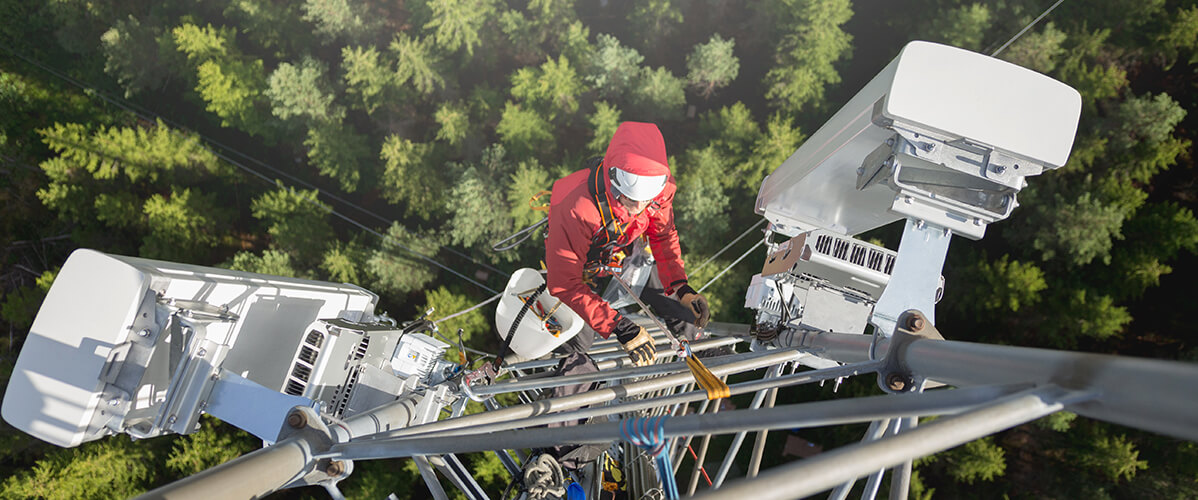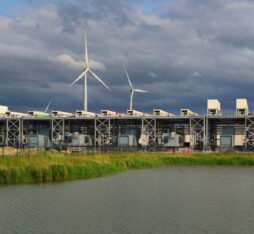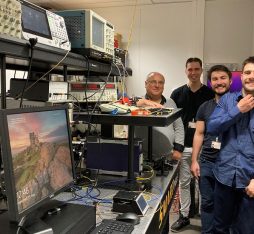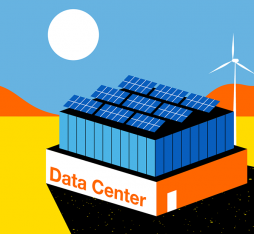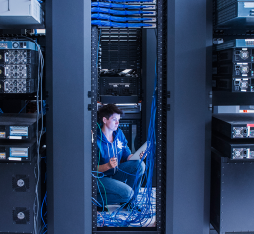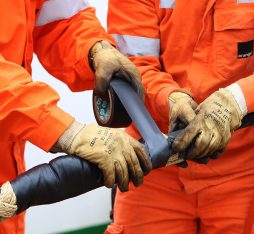“The issues relating to communication network resilience do not benefit from the same dynamic as questions of digital security”.
One hundred and sixty-nine incidents on communication networks in Europe were reported in 2017 by the European Union Agency for Network and Information Security (ENISA), who specifies that 17% of incidents were due to climatic phenomena such as snow, ice, storms, and wildfires. Three years previously this figure was only at 5%.
The increase in incidents linked to natural phenomena confirms the urgency for stakeholders, and operators in particular, to quickly re-establish damaged links, so as to guarantee customers minimum communication service. This service guarantee is called “network resilience”.
An expression that the French electronic communications and posts regulation authority (Arcep) defines in its 2018 activity report as “an operator’s capacity to ensure the return to normal working order of the infrastructures it operates and the services it provides in the shortest time possible following major failures in its network that cause deteriorations and interruptions to service”.
Resilience is key in the case of dramatic events, such as that experienced by Florida in October 2018 with Hurricane Michael, to provide the communications necessary to organise relief, but also to enable the most sensitive services, such as hospitals and firefighters, to be able to function despite the breakdowns.
In France, as early as the end of the 20th century, the winter 1999 storm that is still fresh in our minds, highlighted to the authorities and telecommunications operators the need to design and maintain communications and energy networks that are robust and reliable, in a word: resilient.
However, the Arcep regrets, in an opinion to the Court of Auditors at the end of 2016, that although “crucial”, “today the issues relating to communication network resilience do not benefit from the same dynamic as questions of digital security”.
Enisa has identified five fields of action to secure networks and make them resilient: cloud computing (migrated services), real-time network component anomaly detection and diagnosis, wireless networks, sensor networks and, finally, the integrity of the logistics chain.
Cloud computing
Thus, businesses are increasingly resorting to multiple cloud services so as to optimise their costs whilst benefiting from the most innovative services, guaranteeing a high level of availability of the servers.
Likewise, following Orange, operators are turning to multicloud, which makes it possible to guarantee interoperability and flexibility in the operation of data, services and communications, and therefore their security and reliability.
What’s more, the distribution of roles among the various networks enables distribution of risk, a traditional condition of security. Defined by the term “fog computing”, this combination of networks and cloud computing completes the “digital toolbox” in which we find multicloud, real-time network component diagnosis, wireless networks, and sensor networks.
Sensor networks
Resilience is also built thanks to the Internet of things, which is also called upon to predict incidents and thus better compensate for them. The sensors deployed make it possible to gather information on the network, but also exogenous data such as weather conditions. The data flows thus gathered, once processed, will enable network managers and authorities confronted with climatic events to make decisions. These sensors are connected via specific networks, LoRaWAN™ or LTE-M for example, dedicated to the transport of data from the IoT. The use of edge computing technology to process sensor data locally has also been considered.
Real-time network component anomaly detection and diagnosis
The data from the various sensors is used to feed anomaly detection and automatic decision-making algorithms in real time, not artificial intelligence algorithms.
Also in the field of artificial-intelligence-based solutions, automatic network reconfiguration according to traffic constitutes a serious avenue, explored notably by Orange’s engineers.
The kinds of decisions made by these systems are varied: automatic reconfiguration, alerting response teams, prioritisation of traffic, adaptation of mobile networks.
Wireless networks
Resilience also requires the adaptation of mobile networks. In Florida for example, despite a certain number of base station antennas having been damaged by Hurricane Michael, the mobile network proved to be relatively high-performing thanks to the overlapping of cell sites that enable continuity of service.
Operators also deployed mobile antennas set-up on trucks to repair certain network cells. Resilience can also be obtained through simple solutions.
Another solution considered is to set up flexible aerial platforms equipped with 4G antennas to “re-cell” a network during a natural disaster. The European ABSOLUTE project (“Aerial Base Stations with Opportunistic Links for Unexpected & Temporary Events”) is based on this principle to rapidly deploy a wireless network in areas in difficulty.

